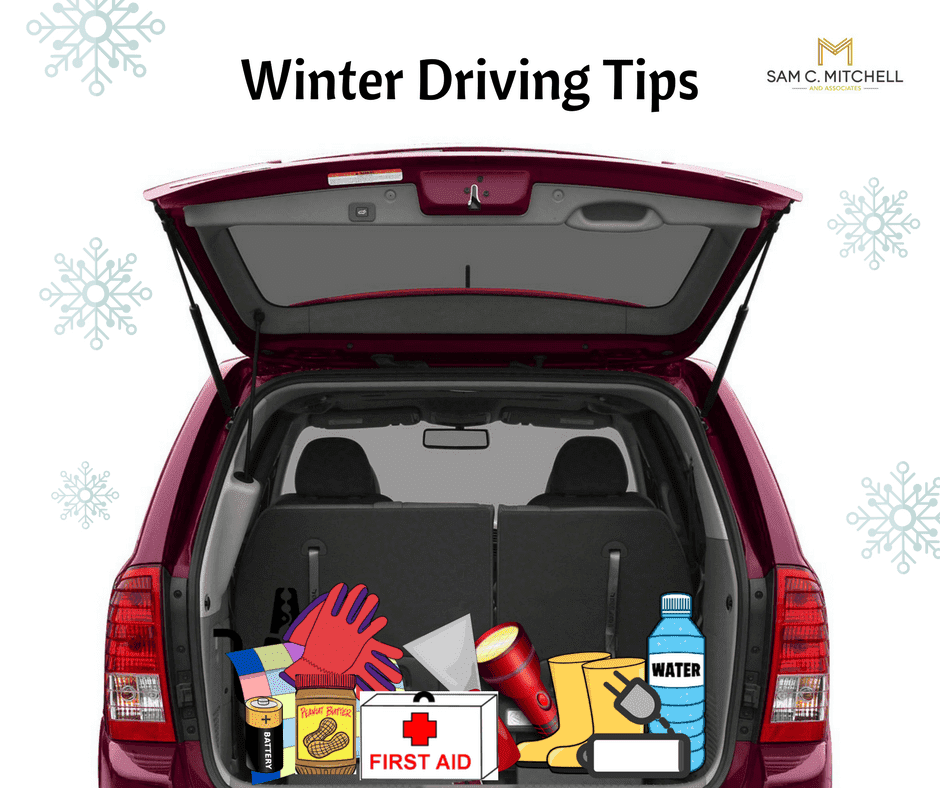Winter Driving Tips

Driving in the snow and ice should not be taken lightly as your chances of getting into a car accident greatly increases. Snow and ice reduced pavement friction and vehicle maneuverability, causing slower speeds, reduced roadway capacity, and increased crash risk. According to the U.S. Department of Transportation Federal Highway Administration each year 24% of weather-related vehicle crashes occur on snowy, slushy, or icy pavement and 15% happen during snowfall or sleet. Do not drive at all if you can avoid it when the roads are slick and icy.
Winter Driving Statistics according to Car Insurance
- About 70% of the U.S. population lives in snowy regions.
- 17% of all vehicle crashes happen in winter conditions.
- 1,836 people die annually due to snowy and icy payment.
- There are 156,164 crashes annually due to icy roads.
- More than 1,300 people are killed in car crashes on snowy or icy roads every year.
- Over 116,800 people get injured in car accidents on snowy or ice roads every year.
- Every year, about 76,000 people are injured in traffic accidents during snowfall.
- About 70% of accidental fatalities that occur during winter happens in cars.
- 800 Americans die in car crashes annually while driving in winter weather conditions.
Tips on Driving in the Snow and Ice according to AAA
- Accelerate and decelerate slowly. Applying the gas slowly to accelerate is the best method for regaining traction. Also take time to slow down for a stop light or stop sign.
- Drive slowly. Everything takes long on snow-covered roads.
- Following distance should be increased by 8-10 seconds
- Know your brakes. Whether you have anti-lock brakes or not, best way to stop is threshold breaking. Keep the heel of your foot on the floor and use the ball of you foot to apply firm, steady pressure on brake pedal.
- Don’t stop if you can avoid it.
- Don’t power up hills. Try to get inertia going before you reach a hill.
- Don’t stop going on a hill.
- Stay home. If you really don’t have to go out, don’t. Even if you can drive well in the snow, not everyone else can.
Top Reasons for Accidents in Winter Weather
- Driving too fast for weather conditions
- Failure to clear all vehicle windows
- Not allowing yourself enough time to get to your destination
- Following too closely
- Stopping in a lane of travel
- Unnecessary travel
- Poor braking
- Over acceleration
Basic Winter Survival Kit
If you find yourself stranded, be safe, stay in your car, put on your flashers, call for help and wait until it arrives. Here are some helpful items you may want to put in your car in the case of an emergency.
- Flashlight
- Extra batteries
- Blanket
- Nonperishable food items
- Water
- Gloves
- Boots
- First Aid Kit
- Cell phone charger
- Ice scraper
- Jumper cables
Contact Us
Unfortunately, there are many drivers out there who do not obey the laws nor listen to safety tips while driving in the snow and/or ice. If you have been injured in an auto accident, give us a call at 618-932-2772 or go to www.scmitchell.com/contact-us/.
